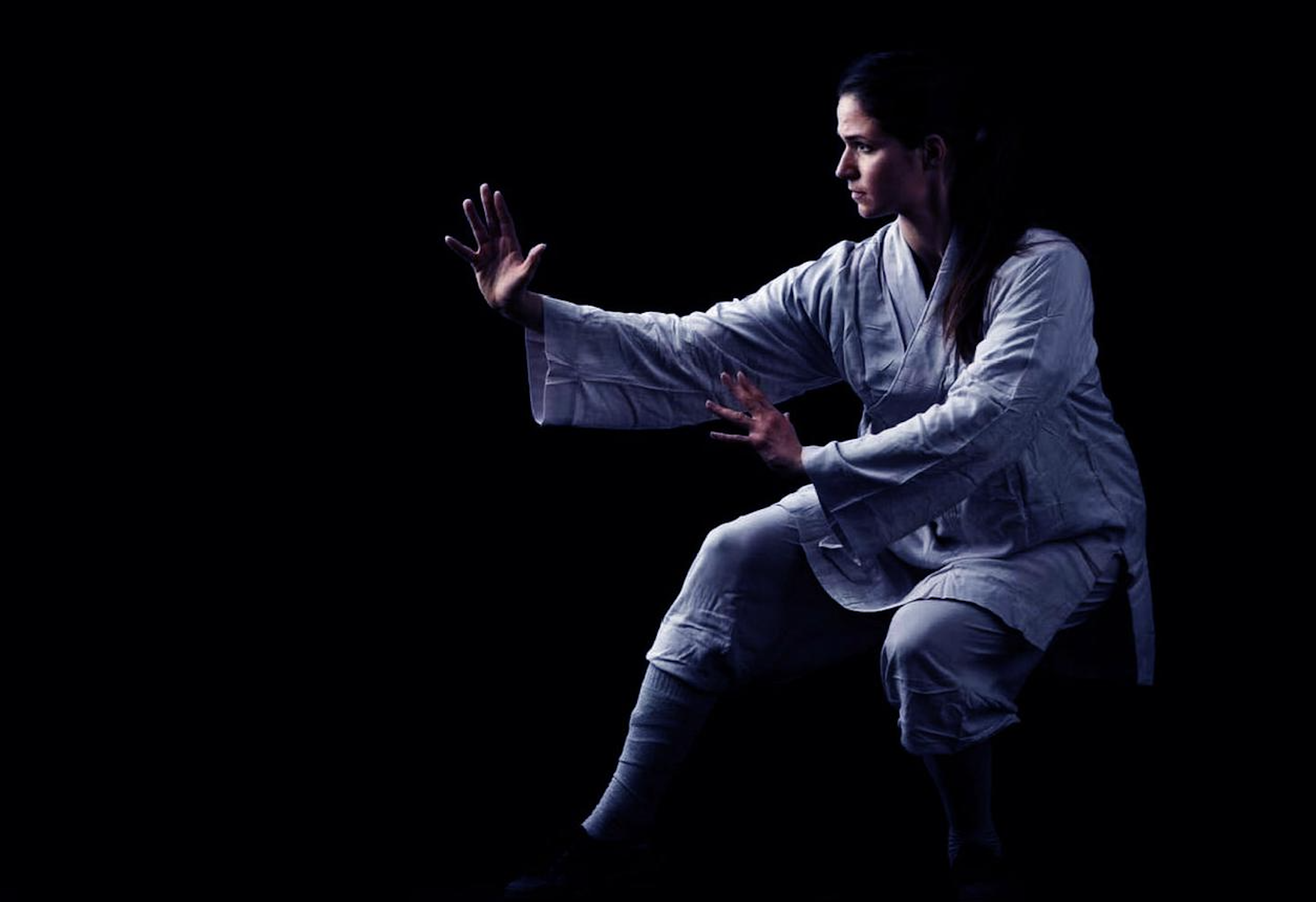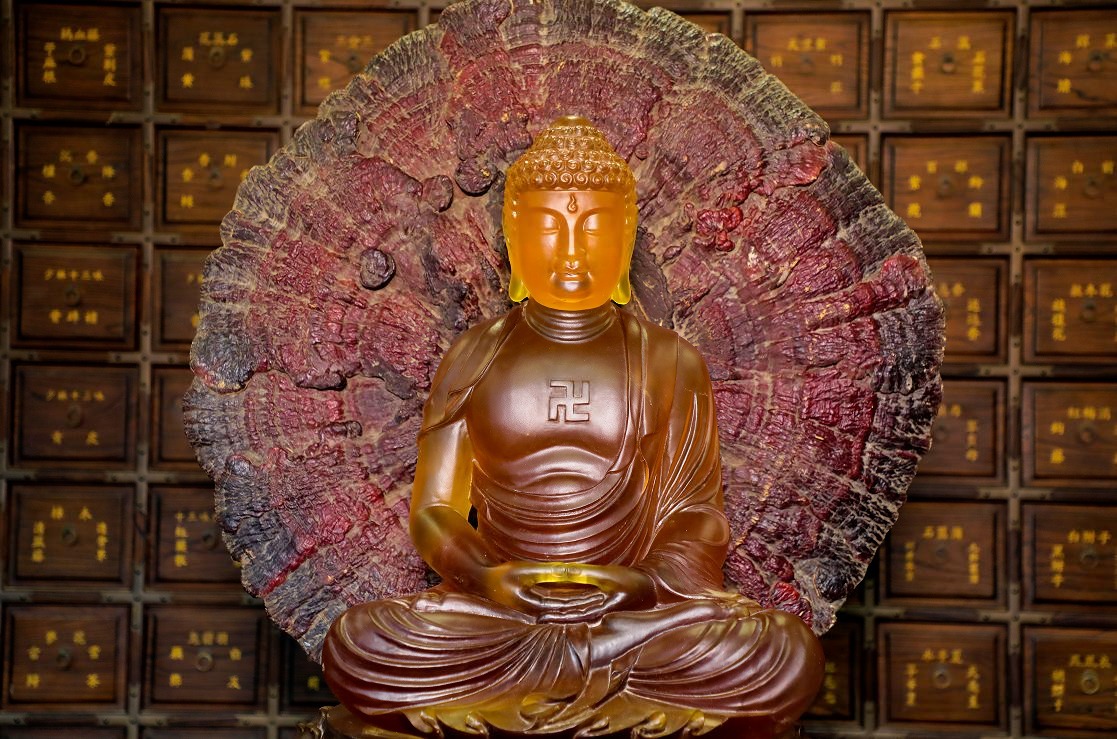The still find boundless wisdom in their hearts; the active often let their minds drift into emptiness. When not a single thought arises, all truths naturally become clear.
The path of Shaolin cultivation begins within the heart. Beyond fists and feet, meditation is the key to inner tranquility. To the world, Shaolin monks are often seen as agile and strong, yet few realize the daily practice of sitting in silence and introspection that lies behind their discipline. The unity of Chan (Zen) and martial arts is the core of Shaolin’s thousand-year heritage—and meditation is the very gateway to “Chan.”
Why Meditation Is the First Step in Shaolin Practice
Shaolin teaches: “When the mind is still, the qi flows smoothly; when the qi flows smoothly, strength reaches its full potential.” If the mind is restless like a monkey and the thoughts as fleeting as clouds, even mastering a thousand techniques will lead nowhere. Meditation is the starting point for taming the mind. Shaolin meditation is not something abstruse—it is a way of life, a practice of returning to one’s origin and facing oneself.
“Do not seek the Dharma outside the mind; in all phenomena lies the essence of Chan.” Shaolin meditation emphasizes: do not chase or resist, neither welcome nor reject—simply abide in the present, observing the mind as a mirror. A few moments of silent sitting each day, listening to the inner voice in stillness, is the very first lesson of cultivation.
First Method: Observing the Breath, Entering the Gate of the Heart
For beginners, the easiest and most essential meditation technique is observing the breath. Close the eyes, sit upright, press the tongue to the roof of the mouth, and place the hands in a mudra (symbolic gesture) just in front of the dantian (lower abdomen). Sit still. Let the breath come and go naturally—there is no need to guide it deliberately. All that is required is to “know” its presence.
When the mind is restless and thoughts arise incessantly, remember: do not suppress or reject them. Simply gently bring the attention back to the breath. Repeating this process, the mind gradually calms, and thoughts become clearer. This seemingly simple exercise is one of the daily heart practices that Shaolin monks undertake every morning.
During this process, wearing a supportive spiritual tool can enhance the effect. For example, this Five-Element Energy Balance Buddhist Bead Bracelet, crafted from the five elements—metal, wood, water, fire, and earth—imbues each bead with the energy of heaven and earth. Worn on the wrist, feeling its temperature, weight, and texture with each breath serves as both an aid to entering stillness and a reminder—that amid worldly affairs, the heart must return to its source.
Second Method: Counting the Breath to Calm the Restless Mind
If simply observing the breath proves insufficient to still the thoughts, the “counting breath method” can be used as an aid. Inhale while silently counting “one,” exhale while counting “two,” continuing up to “ten,” then starting over at “one.” This method helps beginners focus their attention and interrupt distracting thoughts.
But the goal is not to “count accurately”—it is to give the “mind something to anchor to.” Whenever you notice your mind wandering or skipping numbers, do not scold yourself. Gently return to the counting. Day after day, the mind becomes as calm as water, the thoughts as open as an empty valley.
As the ancients said: “Regulate the body to be upright, regulate the breath to be subtle, regulate the mind to be still.” The threefold regulation of body, breath, and mind in Shaolin meditation can all be glimpsed through the counting of the breath.

Third Method: Inner Observation of Body and Mind, Awareness of the Present
Once stillness is attained, one can further observe the body—from the crown of the head to the soles of the feet, slowly scanning the entire body with full awareness. This is not imagination or analysis, but pure sensation. When attention lingers on a particular part of the body, that place becomes the “present moment.”
If tension or discomfort is felt, do not avoid it—just observe it. This act of “seeing” is itself healing. When we can face the unease and turbulence within our body and mind, those deeply buried emotions are given a chance to be released.
In this practice, holding an object can also help deepen the state. Gently grasping the Five-Element Energy Balance Buddhist Bead Bracelet in your hand, feeling each bead as you touch it, is like touching the flow of the five elements of nature. As the mind follows the beads and the intention moves with the touch, body and mind become one, naturally leading to stillness.

Wu Xing Beads | Five Element Harmony Bracelet
Those seeking holistic balance and energy alignment. Individuals experiencing burnout.
Learn About This Shaolin TreasureFourth Method: Infusing Chan into Motion, Daily Life as Practice
Shaolin meditation is not confined to the meditation cushion. True Chan can be found in every posture—whether walking, standing, sitting, or lying down. Washing dishes, sweeping the floor, or taking a stroll can all be opportunities for mindfulness. The key is not “what you are doing,” but “whether you are doing it with awareness.”
With each step, synchronize with your breath; with each glance, bring forth awareness. For example, when walking, focus on the sensation of your feet touching the ground; when eating, be fully present with the taste of the food and the rhythm of chewing. This is the embodiment of Shaolin’s “moving Chan.”
As the saying goes: “Throwing a punch is Chan; drinking water is Chan; in all things, the Way can be realized.” Shaolin’s introductory meditation is not about retreating from the world, but diving deeper into it—not about seeking extraordinary experiences, but treasuring every present moment.
Fifth Method: Set a Daily Time, Persevere Consistently
The benefit of meditation does not lie in temporary stillness, but in gradual transformation over time. Beginners may set aside 10 to 15 minutes each day at a fixed time. It doesn’t need to be long—just consistent. The location can be a quiet spot, whether upon waking in the morning or returning home at night. With the heart turned inward, one will gradually enter a deeper state.
The Five-Element Energy Buddhist Beads can serve as a daily “anchor of stillness.” Wear them before practice, reflect upon them afterward, allowing the object to follow the movement of the heart, and the heart to settle with the object. Over time, a natural resonance will develop, witnessing the inner transformation.
Conclusion: Sitting in Stillness Is Not Escaping Reality; Meditation Is Returning to Truth
Many misunderstand meditation as an escape from reality—but the truth is quite the opposite. Authentic Shaolin meditation is the most direct way to face reality. We do not hide in silence—we remain clear amid chaos; we do not reject troubles—we dissolve them through awareness.
Like the five-element beads, life itself is a mix of flavors. When harmonized, all phenomena return to unity. Meditation is the path to harmony, the way the heart returns to its true nature. May you, through daily sitting, gradually rediscover the self you never lost—complete as a bead, serene as the heart.




